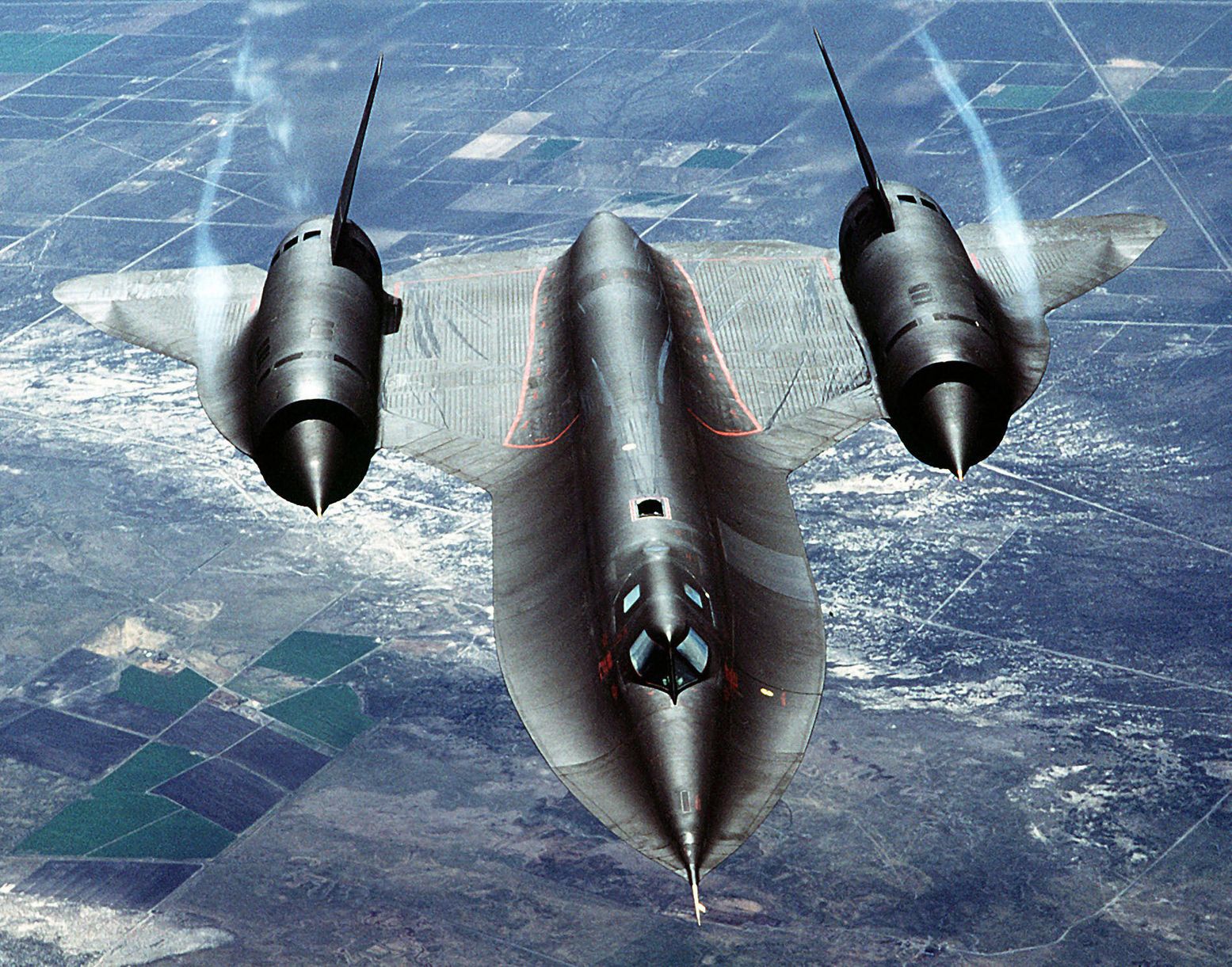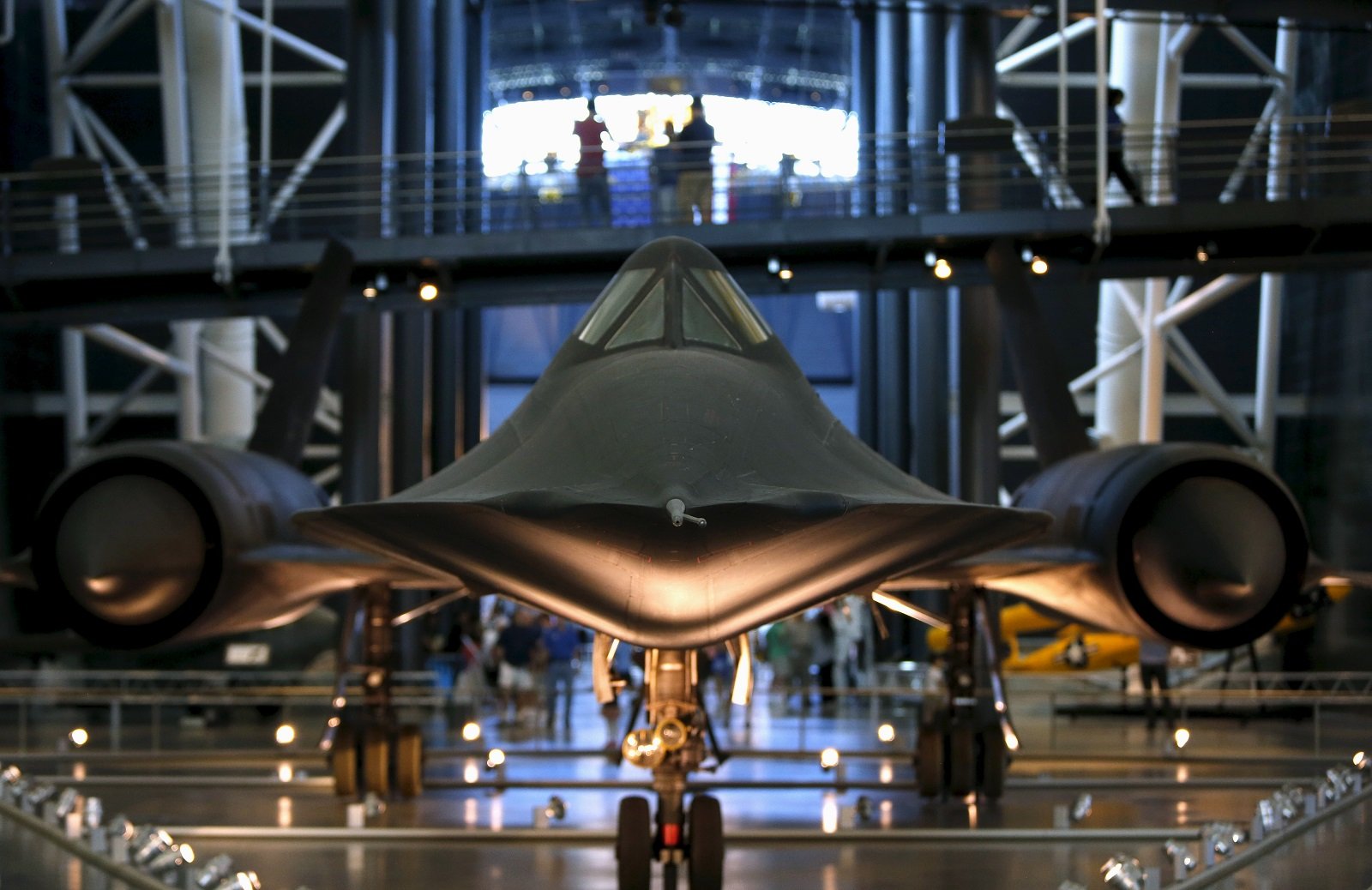Sr71 Last Flight - Today in aviation history, March 6, 1990, the last US flight of the SR-71 Blackbird took place. The flight was from Palmdale, California, and was headed to Washington-Dulles Airport outside Washington, DC. The aircraft (s/n 61-17972) was piloted by Lt Col Ed Yielding, USAF, with Lt Col Joseph Vida serving as the reconnaissance systems officer. Fittingly, on its final flight, the SR-71 broke one last record, entering the record books with the time from Los Angeles, California, to Washington, DC, in just one hour, 4 minutes and 20 seconds. To achieve this, the SR-71 managed an average speed of 2,124 mph (3,420 kmph).
At the end of the trip, the plane was cleaned and prepared for display at the museum. Today, it stands center stage in a place of honor at the Smithsonian Institution's National Air and Space Museum Udvar-Hazy Center. Those who pay their respects acknowledge more than one retired aircraft, but it is the history of success and daring flights that remain a secret to this day. Ultimately, the SR-71 was one of the few kept political and technological secrets of the Cold War.
Sr71 Last Flight
The "last flight" of the SR-71. Rear SR-71 S/N 61-7972. Pilot Lt Col Raymond "Ed" E. Yielding and REO Lt Col Joseph "Jt" T. Vida on March 6, 1990. Source: Konstance E. Keever
The Fastest Plane In The World
The Lockheed SR-71 Blackbird was originally designed by engineers at Lockheed's famous Skunk Works. The plane was taken from another top secret project, the Lockheed A-12, a photo reconnaissance aircraft designed for the CIA with many of the same features and capabilities, although it was a single-seat version. The Blackbird entered service in 1964 and was announced - without much detail - by President Lyndon B. Johnson, who wanted to demonstrate his commitment to defense and security during his 1964 campaign against Barry Goldwater.
Although it was originally called the RS-71 (Reconnaissance, Strategic -71), President Johnson changed the "RS" to "SR" at the silent suggestion of USAF General LeMay, who felt that the SR-71 was better suited name. After this announcement, the USAF, rather than being placed in the position of correcting the president, quietly changed the name - "system" was used again by Gen. LeMay was kicked out. The press suspected an improper reason for the name change, saying the president made a mistake because newspaper copies of his speech still had the name of the original program (RS-71). In fact, the true story of Gen. A change to LeMay's name would have made for better copy, but it remained unknown to the press at the time.
President Lyndon B. Johnson, who first announced the existence of the SR-71 Blackbird to the American public on July 25, 1964.
In the following years, 32 aircraft were built by Lockheed Skunk Works. Each one is handmade. As a result, no two Blackbirds were alike. Maintenance and repair is done to some degree for each aircraft, although they all share the same basic requirements. The aircraft's skin was its most unusual asset - it was made of titanium, a very difficult metal to work with. Lockheed's Skunk Works was able to implement a new technology that had recently become available, thus enabling them to shape and create titanium skin plates, a process that was previously (before the A-12) impossible until now. Given the unique properties of titanium, each time it heats and cools (from each plane), it actually strengthens, rather than weakens. This gave the airline a unique advantage.
Mach 3.5 Over Libya In An Sr 71 Blackbird
A-12 production line at Lockheed's Skunk Works; the SR-71 product line looks very similar. Photo credit: CIA
The Blackbird was and remains the best example of an intelligence aircraft plan from the Cold War. It was designed to fly at altitudes much higher than 80,000 feet and at speeds of Mach 3+. As a result, the sky glowed with a warm blue during the mission, as did the wind moving around the plane at an incredible speed, moving at about half a mile per second! Pilots are specially recruited, equipped and trained for the aircraft. In fact, within the USAF there was no higher standard than that written for a member of the SR-71 flight crew. The medical test alone caused many pilots to fail the program.
Throughout the SR-71's operational life, each aircraft was carefully planned for future operations. The mission was broad and the pilots were well prepared for each flight. The planes were inspected in detail before and after each mission. The reasons for this were clear - most of the flights were conducted in airspace denied to the US air base and it is often heavily protected. However, the Blackbird, which operated at high altitude and high speed, was beyond the range that could be targeted by either aircraft or surface-to-air missiles (SAMs). The Blackbird regularly flew over the Soviet Union and brought back photographs and ELINT interceptors from specially designed collectors stored in chines along the nose of the aircraft.

The Soviets (and others) did not acknowledge the plane or let it pass unanswered. They would fire SAMs at the Blackbird, hoping that the missiles would reach high flying altitudes and proceed to hit the aircraft. When a SAM launch is detected, SR-71 pilots accelerate and turn slightly to avoid the high-altitude envelope of the missiles being fired. In the constant, silent game of cat and mouse going on, there was a deadly seriousness involved. Everyone remembered when the Soviets successfully shot down Francis Gary Powers in his U-2. However, despite many attempts, the Soviet Union did not shoot down another blackbird - and neither did the plane fly over it.
Blackbird Rso Tells The Story Of The First Time A Sam Was Fired At An Sr 71 Mach 3+ Spy Plane
However, the flight was far from "safe". The SR-71 was a lightning fast hot rod that burned fuel at mind boggling speeds while being at the edge of the envelope for all missions. By the late 1980s, it was an outdated piece of technology and most of the subsystems required high maintenance. As a result, 12 Blackbirds were lost in operational accidents, most during takeoff and landing, although a few were testing different new systems.
The D-21 was originally designed to be launched from the rear of the M-21 carrier aircraft, a variant of the Lockheed A-12 aircraft.
On the A-12 side, the same number of accidents and incidents occurred. One of these programs was the D-21, a specially designed high Mach unmanned vehicle that was launched from the top of the A-12 carrier, which was called the M-21. The D-21 allowed infiltration and successful intelligence gathering from the most heavily defended areas of the Soviet Union. Although the idea looked good on paper, it was a challenge in practice. Since the D-21 was driven up as a parasitic vehicle, it always ran the risk of being separated from the "mother carrier" M-21. This risk increases only with the speed and altitude of the aircraft - and another aircraft was lost as a result during the testing and operation of the D-21.
When the SR-71 was retired in 1990, many of its supporters and supporters saw the move as a huge mistake. However, the reality was completely different. Few appreciated the extraordinary cost of each mission - the SR-71 was a budget problem. As with newer, cheaper and better satellite retrieving systems, such as the KH-11 Hexagon, the protection provided in space was so much better than that provided by the SR-71 that there seemed to be no competition.
Lockheed Sr 71a > National Museum Of The United States Air Force™ > Display
The SR-71A took off in 1999 with a test instrument on the rear wing of the aircraft and the F-18 fighter jet in 1999. Photo credit: Tom Tschida, NASA
However, military retirement was delayed because there were still benefits to the SR-71. Satellite transit is predictable, allowing some nations to hide their secrets at certain times of the day when the satellite is known to be moving overhead. However, SR-71 can arrive at all hours, an uncertainty that makes it difficult to hide anything. Indeed, if the plane had not been so expensive to run, it would have been kept and operated for many more years—perhaps until today. As it was, NASA continued to pursue the SR-71 in various research projects for many years after that - and so the "last flight" of the SR-71 was not the last flight after all.
President Lyndon B. Johnson's announcement of the SR-71 is preserved in the Presidential Archives - for the sake of history, we quote it below (you may note that from the date of the announcement of the SR-71 to the date of his retirement, the aircraft's speed and altitude remained unchanged at Mach 3+ and 80,000 feet respectively):

I would like to announce the successful development of a major new strategic manned aircraft program, to be used by the Strategic Air Command. The program uses the new SR-71 aircraft, and provides a long-range, advanced intelligence aircraft for military use, capable of reconnoitering military operations.
Video Shows Sr 71 Blackbird Last Flight (at A Speed Of Mach 3.2!)
The Joint Chiefs of Staff emphasized the importance of strategic considerations during the RS-70 review.
Sr71 flight, go last minute flight, last minute flight toronto, last minute flight tickets, last minute flight boston, sr71 flight manual, last minute flight houston, last moment flight booking, last second flight deals, last minute flight deals, last minute flight mexico, last time flight deals
0 Comments